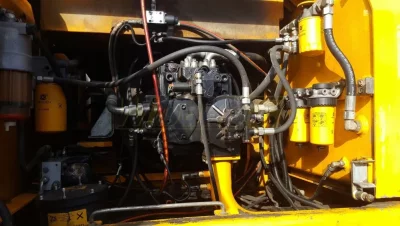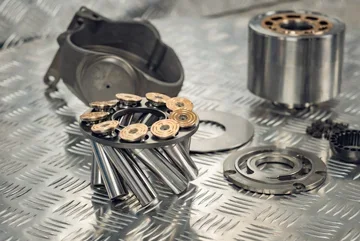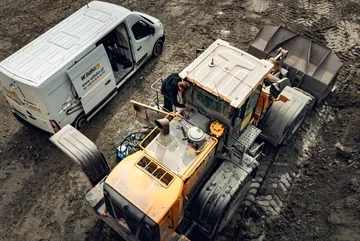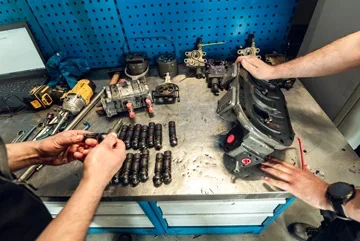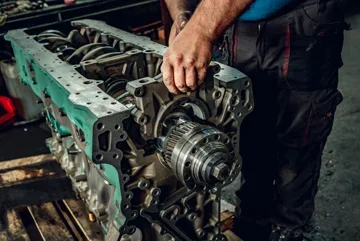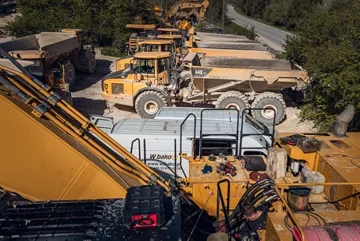Complete overhaul of the Liebherr D936 L A6 engine
Engines from mobile cranes are units that must withstand enormous loads and operate in demanding conditions. When something goes wrong, there is no room for half-measures – comprehensive action is required. Such a case arrived at our workshop: an engine Liebherr D936 L A6, which came with symptoms of water in the oil. What next? See how the complete process of its repair looked.
First steps – cleaning and preliminary verification
Before the mechanics touch the tools, the engine undergoes thorough washing. In this case, the dirt was so severe that it covered the unit like a concrete shell. Only after cleaning did the engine reach the workshop station, where its disassembly and initial inspection began. Even at this stage, we could notice alarming signals – a cracked sleeve, likely caused by overheating, could lead to coolant leaking into the oil. Disassembly revealed even more – each part was carefully checked and measured, even the screws were analyzed for thread stretching.
Assembly – a stage where there is no room for errors
After verification and preparation of the components, we began the assembly process. From the pushrod cups, through the bearings and crankshaft, to the camshaft and fuel pumps. Every movement had to be executed with full concentration. The timing system in this engine is based on gears, and its correct setting is an absolute priority. Even a minimal mistake can result in the need for re-disassembly – or worse – engine damage. In this model, the flywheel housing is also the timing cover – heavy, massive, and crucial for further assembly. Once it was successfully installed, it was time to install the pistons, oil pan, and finally the cylinder head.
Attention to details – an inconspicuous gasket can destroy the engine
During assembly, care had to be taken with seemingly minor components – like a universal gasket, which in one version of the engine is perfect, but in another can block the oil channel. Such errors can drastically lower oil pressure and lead to the failure of the entire engine. Therefore, each sealing was precisely matched to the specific configuration.
First start and tests on the dynamometer
When the engine was ready, it went to the test station. The start-up was gradual – first at idle, with a slight load. The tests included temperatures, pressures, operating characteristics, as well as the operation of the electronic controller, which in this model is responsible for regulating the RPM.
Electronics also has a voice
Unlike older, purely mechanical units, the Liebherr D936 L A6 has an electronic RPM regulator. This means that for the tests, it was necessary to connect the appropriate ECU controller, which allowed for setting specific RPMs and observing the engine's response. The result? The engine runs like new. After a full cycle of tests, it was prepared to return to its natural environment – the mobile crane.
The entire film can be seen here.








